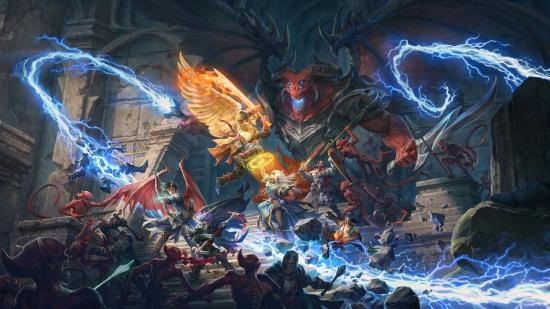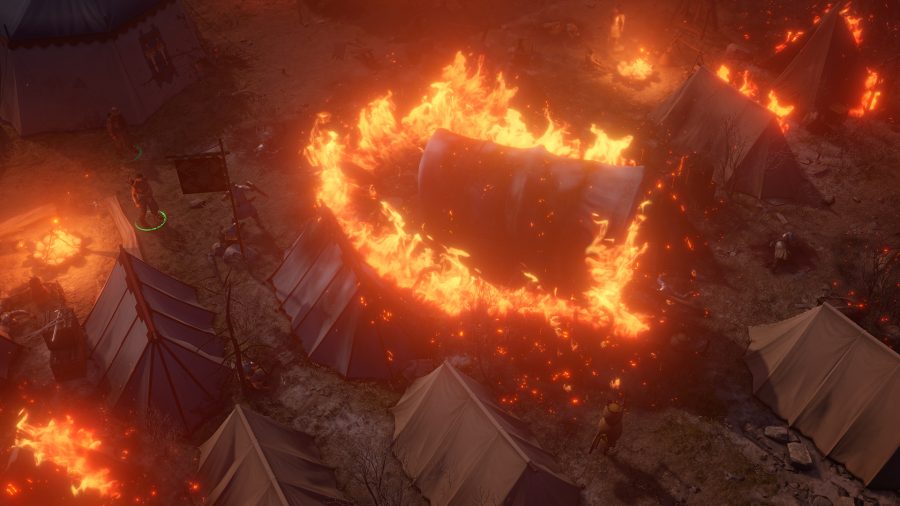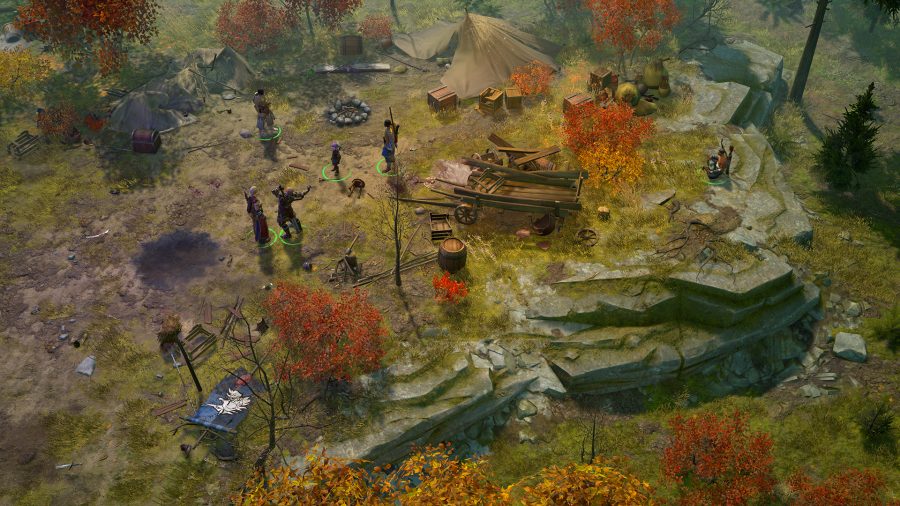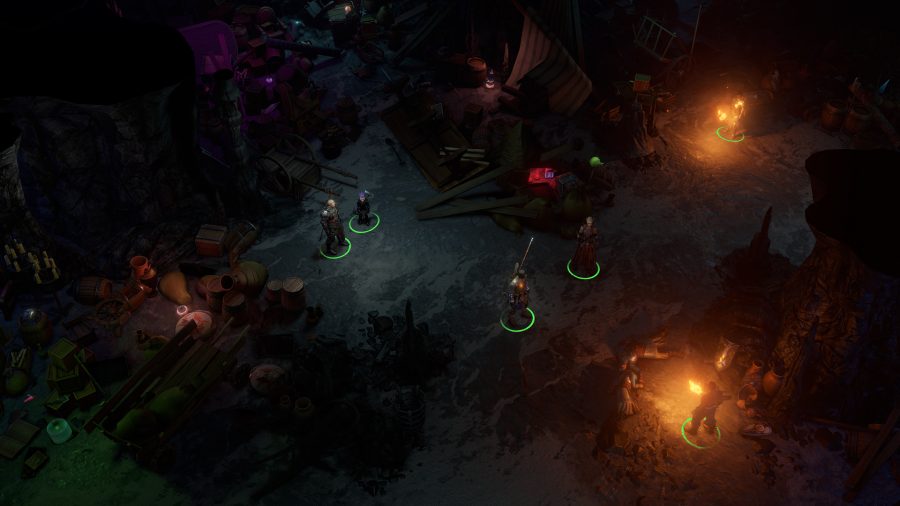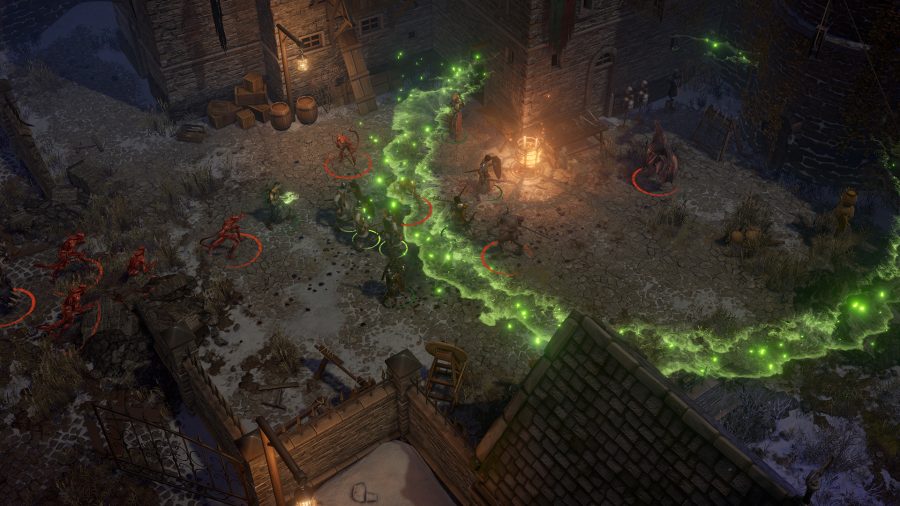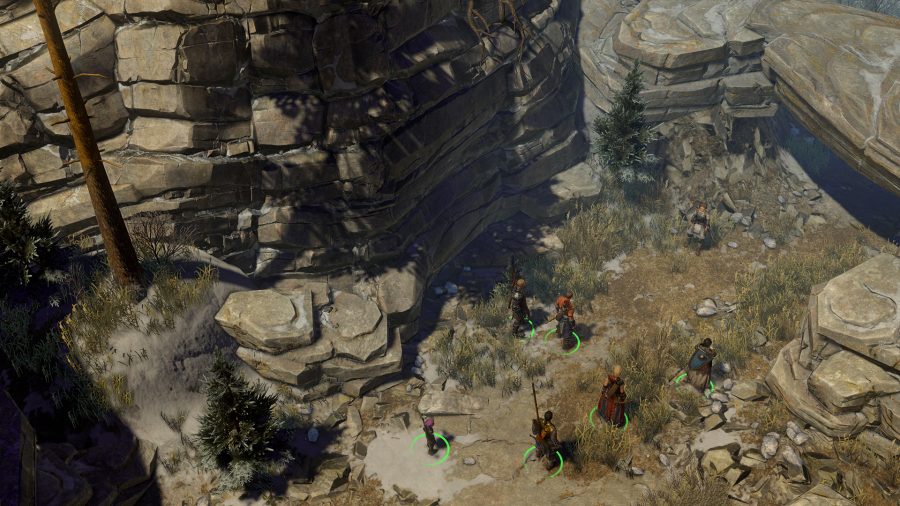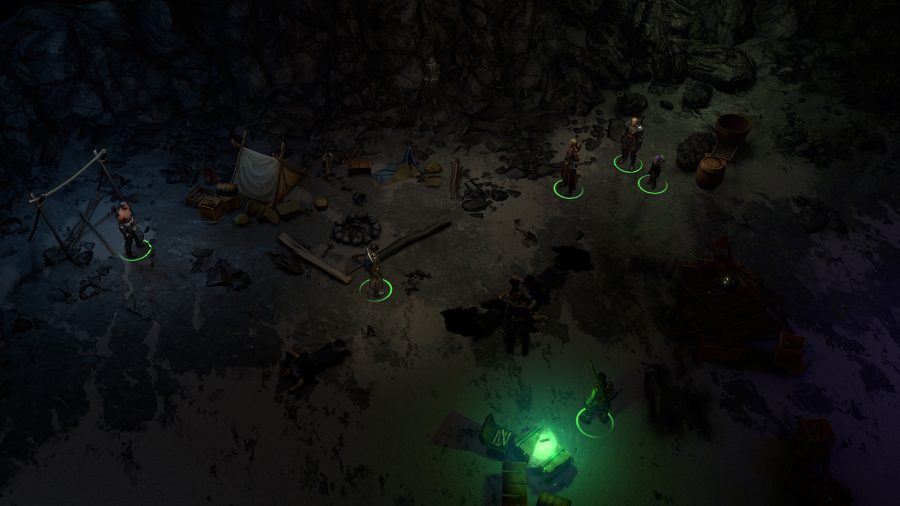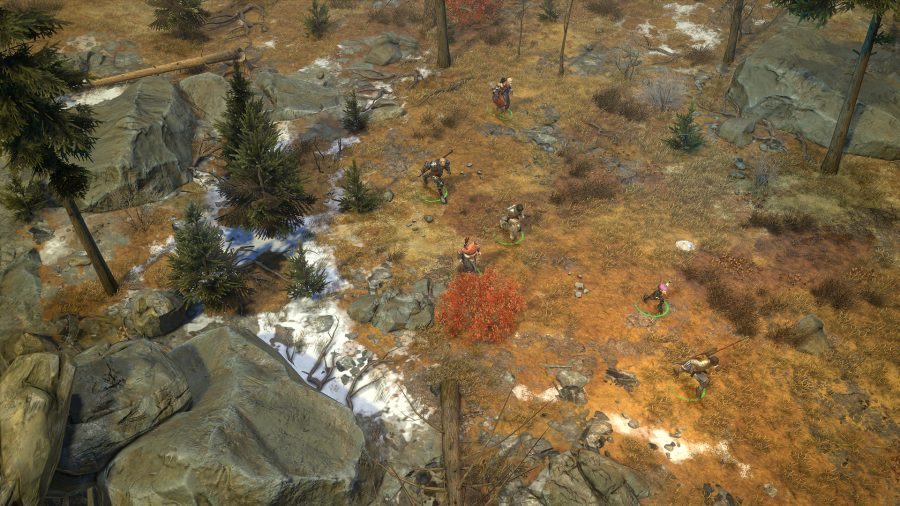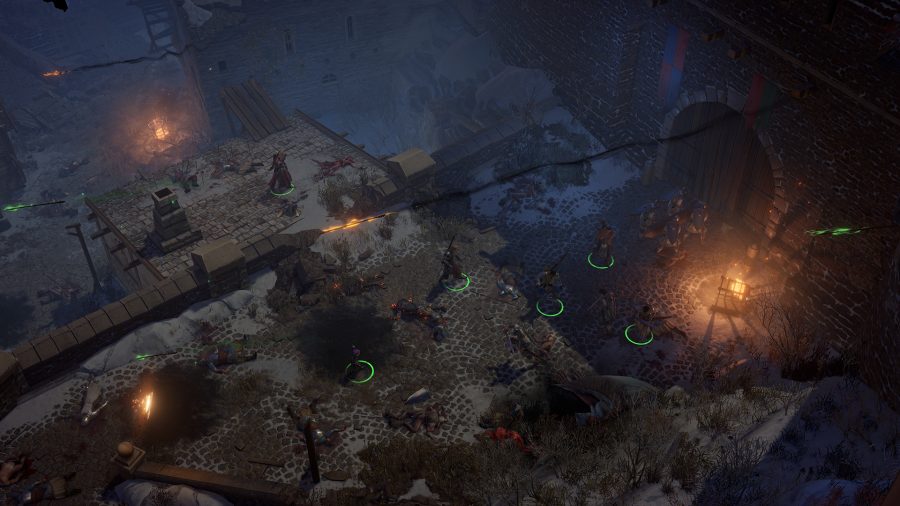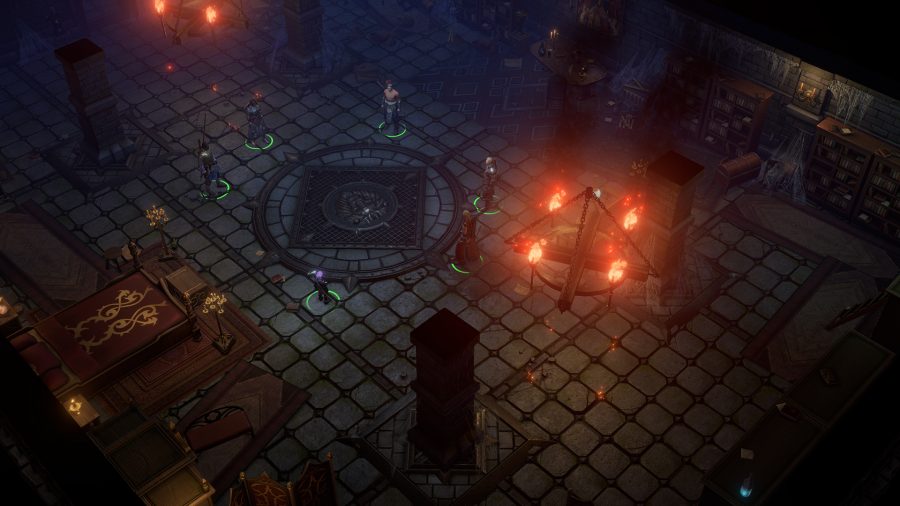The first edition of the Pathfinder Roleplaying Game was released in August 2009, and grew out of Dungeons and Dragons version 3.5. More rules-dense and content-rich than D&D’s current, more accessible fifth edition, 3.5 was a very different game, but popular with the hardcore crowd. Thus, Pathfinder had a ready-made audience when it launched, and has been one of the best-selling pen-and-paper RPGs of the last decade.
And thus, enter videogames. Pathfinder: Kingmaker was based on the pen-and-paper campaign of the same name – one that had input from none other than Ed Greenwood, creator of D&D’s main campaign setting. It released in September 2018 to a mostly positive reception, though criticisms over its complexity, bugs, and the half-baked execution of some of its more ambitious ideas recurred. After three pieces of DLC for Kingmaker, Russian developer Owlcat Games is wasting no time and getting ready to show its sequel.
Pathfinder: Wrath of the Righteous is based on another classic Pathfinder campaign. We spoke with Alexander Mishulin, creative director, and Andrey Tsvetkov, head of publishing, about what they felt worked about Kingmaker, where there’s room for improvement, and what makes Pathfinder special in the midst of this exciting resurgence in classic role-playing games.
PCGamesN: What’s been your assessment of the reception to Kingmaker, and are there any talking points from the community you’d like to acknowledge?
Alexander Mishulin: A lot of people really loved our companions. They loved the interactions and the dialogue when sitting in camp and talking to each other, and giving their view on certain choices or situations. We are planning to continue this in Wrath of the Righteous; companions are a focus for us, we want to make them really great, detailed characters.
One aspect that kind of split the community was our strategic layer. Some players loved it, others not so much. Sometimes it’s a little bit detached from the core experience, though we’re going to improve [on that]. The strategic layer [was] a spotlight for our companions, it allowed us to put them in new situations and show them from a different perspective. So we’re going to improve it, but I cannot be more specific right now.
We were also criticised for a steep learning curve and balance issues. We’re making the game more accessible for new players and providing additional difficulty settings to cater for everyone, from story mode to really difficult modes for hardcore players to find a challenge.
Kingmaker also had quite a lot of bugs at release, so right now we are making several systems that allow us to find those. One example is that our choice system tended to produce mismatches, so now we’re making systems that allow us to see all logic continuities throughout the game to make sure that there are no missed branches that we thought were impossible but somehow have become possible. It will allow us to actively see what branches are still not working properly.
We’re also working on a special bot that is running through the game even as we speak, and testing everything randomly – picking random choices, random directions to run. It’s actually playing the game, and if it finds an error it reports it, and we’re going to fix it. So there will be a lot more bot hours of testing.
Kingmaker had real-time combat with pause. Are there any plans to make Wrath of the Righteous turn-based?
AM: We really love that the community made turn-based mods that allowed a lot more players to enjoy our game. And we do see its popularity, but right now we’re focusing on making real-time with pause the best we can for Wrath of the Righteous, with a lot more tweaks and fixes. So right now we’re not doing anything for turn-based.
That’s an interesting choice – we saw a lot of excitement when Pillars of Eternity 2 announced its turn-based mode, and it follows logically from the tabletop.
Andrey Tsvetkov: I will add to Alex’s answer that we’re not denying that we might end up working on this in the future. [Turn-based] is a really nice feature and we understand why parts of the community ask for it. And the mods were really cool – we’re glad there are people who actually do this. We might consider it later in development, but for the moment, as Alex said, we are focused on our creative vision, which is real-time with pause, as in Pathfinder: Kingmaker.
We’re listening to our community, and I believe this is why our fans love our studio. We are people-driven, and we listen to our fans what they want. So we know there is an amount of people that actually want this and we will think about it, but we cannot confirm that the decision is made either positive or negative at the moment.
You mentioned that you’re adapting the paths from the tabletop game, but you’re also adding new characters and new elements. What’s been your approach here?
AM: As with Kingmaker we’re taking the adventure path and considering ourselves the game masters for the story. We can’t share much more at the moment, but I can say that we are making it playable for characters of any alignment.
The tabletop adventure path is very good-oriented – it assumes most of the characters are good-aligned, some are neutral. We will have both good and evil choices – a full spectrum available to you, with all the consequences. This is a major change to the adventure process and goes more along the direction of classical RPGs.
What are the incentives to make use of your free-form class-building? My issue with such systems has always been that mixing skills from different archetypes often makes an unfocused hybrid that’s weak in battle and has no clear identity.
Some players like to role play through the mechanics – they like to create different characters or combinations of characters. Maybe it’s not the best in terms of efficiency, but it allows them to role-play their own story better – perhaps by creating a party full of dwarves, or where every character has a pet.
On the other hand, some people like to optimise everything and create a masterful combination of classes and archetypes that destroy enemies even when playing with just one main character without any companions.
So when you’re designing a system like that and balancing these abilities, do you find that tabletop balance carries over well to the digital game, or do you have to take a fresh look at them?
We try to transfer many elements from the tabletop to the videogame. This should feel like Pathfinder, like the tabletop experience. So most mechanics remain the same, apart from being translated to real-time with pause. For example, feats like ‘you may reroll dice once a day’ convert to feats that work automatically, without stopping gameplay.
With respect to the original adventure path, the main storyline remains, but we think of ourselves as GMs for the adventure, fine-tuning it to our players. We allow players to be of any alignment, offer more side stories, choices, and consequences. We introduce companions and their stories as well. Lore-wise, we double-check everything and consult with Paizo [Publishing, owner of Pathfinder] to be sure that we are correctly telling the story in the world it created.
Nevertheless, we want many players to experience the adventure, not just those who know Pathfinder. This is why we are going to provide an extended tutorial that will not only describe how to play the game but also introduce Pathfinder mechanics and nuances, explain how particular mechanics work, or assist with character creation. We are doing so without sacrificing any depth: we are helping those players that want our help. We also help with the lore with special notes to get the player accustomed to the Age of Lost Omens.
We try to translate the experience that you’re having at the table with different party members. We do this with companions and how they interact – the way they discuss their plans before going into a major dungeon or the results of a previous encounter is very close to the experience we have at the table. We are trying to provide this tabletop feeling throughout the game.
We are taking the same approach that worked in Pathfinder: Kingmaker. Some players said that when they decided to try the turn-based mod for Kingmaker, it felt like they were playing Pathfinder at the table. For us, that means we are on the right path.
What other elements from the tabletop do you think you executed well on in Kingmaker and you want to improve on in Wrath of the Righteous?
The focus for us is on the mechanical diversity and versatility that Pathfinder provides. It’s really hard, because it [comes through] an enormous number of abilities, feats, spells, etc. In Pathfinder: Kingmaker there were about 1,000 such entities, and we are taking this as a foundation for Wrath of the Righteous and building further, with new abilities, new feats, new classes, everything. It takes a lot of time and effort.
On the point of comparisons with tabletop, what would you say Pathfinder has over rivals like Divinity, Pillars, or games inspired by D&D?
We really like the Age of Lost Omens setting. When you just open the setting book and read about the different countries, you want to have an adventure in each of them. They’re really different, with great hooks for adventure or experience. I’ll just give one example of Galt, which is a country that is mentioned [in the setting] but not covered by any of our games.
It’s a country where the French Revolution happens every other year. They revolt, select a new government, and destroy part of the previous government. There are people in the streets every time – everything you’d imagine from the French revolutions. They even have guillotine called the final blades, which suck the soul of the killed person into the blade to prevent resurrection. And there are 20 to 30 countries like that which are brilliant settings for gaming experiences. The lore is very rich, very detailed, and very different.
What points of differentiation would you highlight at a mechanical or gameplay level between Kingmaker, Wrath of the Righteous, and other rival CRPGs on the market?
One of the great differentiators is mythics, and how they affect everything in the game. So at a certain point of your adventure, you will be able to become not an epic hero but a really mythic hero, with the ability to gradually change into very powerful entities. Right now I can reveal the angel, demon, and trickster, but there will be more.
These change a lot of your experience from the game: they change some parts of the storyline, your progression, your companions. They change you mechanically, giving you new abilities and disabilities. It’s really different from the usual Pathfinder mechanics, especially so for trickster.
Tricksters don’t trick other people, but the world itself. At a certain point, a trickster understands the laws that put this world in motion – that it is actually governed by dice. Say they roll a critical failure, a one on the dice. They’re able to change it instantly to natural 20, transforming critical failure to critical success. You will be able to see the dice changing the results right before your eyes.
How have your own experiences playing tabletop RPG shaped the narrative of Wrath of the Righteous?
We play it a lot – every member of the team plays Wrath of the Righteous at the table. We have six campaigns running simultaneously, which allows every member of the team to share the vision of the game. Then there is a special channel where the game masters discuss what happened in each session, and whether we can use something [that happened] in the videogame – the best encounters, the best resolutions to situations, what we want to do more of on the screen, and what may not be a great experience on the screen that we could translate into a different encounter that’s similarly thematic.
This is the essential gap that CRPGs can never bridge when recreating the tabletop experience. Since you can’t actually simulate all the actions human players can imagine, how do you create the illusion of similar freedom?
No, we cannot simulate every solution, but if one of our tabletop players has some crazy idea, it can possibly find a different way into the game. I’ll give you an example from Kingmaker because I cannot spoil Wrath.
When we were playing the Kingmaker Adventure Path at the table, there were lots of discussions on the Paizo forums about how other GMs were running the campaign. We found some nice ideas there that we playtested, including one where trolls and kobolds were building their own nation. A party of ours played it at the table and tried to befriend them to welcome into their kingdom, and we thought that it would be great if the player could do that. So that became a special answer, that ‘reinforces’ certain alignments, allowing players to make really interesting choices for the alignment they currently have. This one is for Chaotic characters.
It took it took us a while to figure out how to put this option into the game and how it affects everything afterwards, but it made it in. Another thing we noticed when we started playing the Wrath of the Righteous was that not all of the players wanted to be good and nice. So we ran a campaign that specifically and solely ran evil characters to try and see how it could be possible, how we could make it interesting, and why evil characters would want to fight a demonic invasion [which is the main challenge in Wrath of the Righteous]. We found some of the solutions in that campaign, and some of them found their way into the game.
What happens when these tabletop sessions give you a ton of cool ideas to implement? What are your criteria for prioritising them and putting them into the videogame?
Do we want other players to experience this choice? Will they want to? How many people can we find that will enjoy befriending trolls and kobolds? Of course we have to make assumptions, it’s not like we have a great poll of players. But if it sounds cool, and if a lot of people at the table in this particular party had a great time doing so, then most probably we will consider putting it into the game.
We have to solve other questions, like how are we going to do that, will it cost too much, or can we do this with little effort? Ultimately, the decision to take something and put it into the game goes through the leads – narrative lead Alexander Komzolov and myself will decide if we really want something in story-wise. If it’s some other type of experience, like a mechanical experience, we go to our mechanical lead and discuss it with him, and ultimately put it into the schedule and into the feature list.
